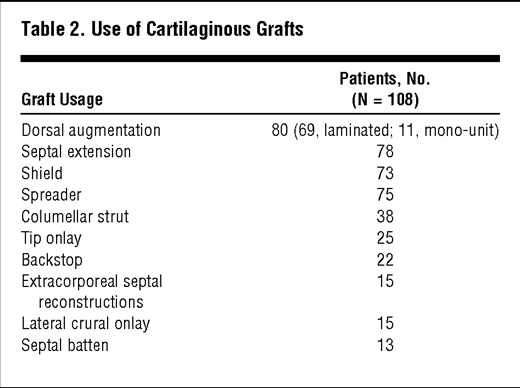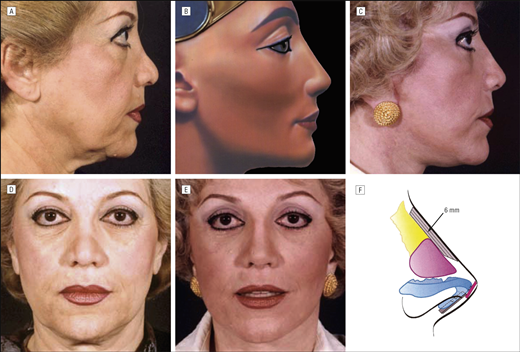肋軟骨隆鼻完全沒有缺點嗎? (隆鼻, 鼻整形)
http://easypretty123.pixnet.net/blog
基本上鼻整形手術每一種方法或材料都有它的問題, 醫師則是
想盡方法想找到完美的方法, 不過目前還有很多爭議. 矽膠模
型則是已在台灣使用了三十年, 缺點已為大家詳細討論所熟知,
全自體鼻整形歷史還不夠悠久, 是不是真的沒問題, 應該沒人敢
保證, 唯一可確定的就是這是目前的趨勢, 醫師間正熱烈分享討
論中, 矽膠則似乎已很成熟, 所以沒什麼可討論的.
以下為韓國醫師2012年發表有關自體肋軟骨的論文, 基本上其
實沒有韓式隆鼻, 而是結構式隆鼻, 韓式隆鼻的名稱是台灣醫師
發明, 而不是韓國醫師發明, 不過不論哪個國家的醫師只要做得
好, 就值得學習.
Outcomes Following Rhinoplasty Using Autologous Costal Cartilage (自體肋軟骨)
自體肋軟骨鼻整形術的結果
Arch Facial Plast Surg. 2012;14(3):175-180. doi:10.1001/archfacial.2012.138.
Accepted for Publication: January 25, 2012.
Author Contributions:Study concept and design: Lee and Jang. Acquisition of data: Moon, Lee, and Jang. Analysis and interpretation of data: Moon, Lee, and Jang. Drafting of the manuscript: Moon and Lee. Critical revision of the manuscript for important intellectual content: Moon and Jang. Administrative, technical, and material support: Moon, Lee, and Jang. Study supervision: Jang.






Use of autologous costal cartilage in Asian rhinoplasty.
Source
Department of Otorhinolaryngology-Head and Neck Surgery, Seoul National University College of Medicine, Seoul, Korea.
Abstract
BACKGROUND:
The authors present the senior author's experience and evolution of techniques with the use of autologous costal cartilage grafts in Asian rhinoplasty.
METHODS:
Eighty-three patients who had rhinoseptoplasty with autologous costal cartilage grafts were included in this retrospective review. The types of grafts, complications related to the graft itself and graft harvesting, surgical outcome, and patient satisfaction were evaluated. The techniques of graft carving and cartilage harvesting were also reviewed.
RESULTS:
The mean postoperative follow-up duration was 29.5 months. Of 83 cases, 39 were revision cases. Autologous costal cartilage grafts were used for the dorsum in 83 cases, for the tip in 66 cases, for the septum in 58 cases, and for the ala in 23 cases. The complication rate related to grafts was 12 percent, which included five warped grafts and five infections. All infections were controlled with intravenous antibiotics. Two patients who had infection developed mild resorption of the grafts. Graft exposure, mobility, or significant resorption was not observed. Two patients underwent revision surgery for aesthetic dissatisfaction and one was planned. The length of chest incision for graft harvesting was 2.4 cm on average. There was no pneumothorax or significant donor-site pain. The donor-site scar was minimal, although two patients developed a hypertrophic chest scar. Overall, functional and aesthetic outcome was satisfactory in most patients.
CONCLUSIONS:
結論
Autologous costal cartilage grafts in Asian rhinoplasty is a versatile and reliable graft material for both primary and revision cases. Even with minimal complications and morbidities, the possibility of warping in dorsal onlay grafts and the possibility of infection in revision surgery need attention.
自體肋軟骨為可信賴的材料, 但還是要小心彎曲及感染問題
以下則非關肋軟骨, 而是使用Gore-Tex 10年的追蹤
Nasal Augmentation Using Gore-Tex
A 10-Year Experience
Michael S. Godin, MD; S. Randolph Waldman, MD; Calvin M. Johnson, Jr, MD
Objective: To determine on an ongoing basis the safety
and efficacy of expanded polytetrafluoroethylene (Gore-
Tex soft tissue patch and preformed nasal implants) as
an implant in rhinoplasty.
Design: A retrospective study of 309 consecutive patients
who underwent rhinoplasty, including augmentation
with Gore-Tex, during a 10-year period.
Setting: Two major academic medical centers and 2 private
office surgical centers.
Intervention: One hundred sixty-two patients (52%)
presented for primary rhinoplasty; the remaining 147
(48%) presented for revision surgery. All received Gore-
Tex implants to augment the nasal dorsum and/or base.
The grafts ranged from 1 to 10 mm in thickness. Follow-
up ranged from 5 months to 10 years, 5 months, with
an average of 40.4 months.
Main Outcome Measures: Clinically noted complications
and patient satisfaction.
Results: Ten (3.2%) of 309 grafts became infected and
were removed. One graft was removed and 1 graft was
modified and replaced postoperatively because of excessive
augmentation. Infection requiring removal occurred
in 8 patients (5.4%) undergoing revision rhinoplasty
and in 2 patients (1.2%) undergoing primary
rhinoplasty. Nasal septal perforation was present preoperatively
in 3 of the patients who developed infection requiring
removal, and we consider it a contraindication
for nasal Gore-Tex implantation.
Conclusions: Gore-Tex remains an effective implant material
for nasal augmentation in rhinoplasty. The complication
rate in primary cases is low. The risk of infection
necessitating removal rises significantly in revision
cases, where its use may still be desirable but must be
weighed more carefully.
Arch Facial Plast Surg. 1999;1:118-121
結論: Gore-Tex很不錯, 但在二次手術的情形下感染率也高
以下這篇更久, 追蹤Gore-Tex 17年
Applications of GORE-TEX Implants in Rhinoplasty Reexamined After 17 Years
Objective To determine the efficacy of GORE-TEX (W. L. Gore & Associates Inc, Flagstaff, Arizona) alloplast in rhinoplasty.
Design A 17-year retrospective medical chart review at a teaching hospital, community hospital, and private facial cosmetic surgery center. A total of 521 patients (122 male and 399 female; age range, 13-70 years) were followed for 12 months to 17 years. All patients had undergone GORE-TEX implantation rhinoplasty (685 implants in 158 primary procedures and 508 secondary procedures) performed by 1 surgeon. Patient satisfaction, expressed with respect to desired cosmetic benefit and functional outcome, and physician assessment, based on aesthetic improvement, technical considerations, and complications, were evaluated. Results were assessed according to the follow-up notes in the medical chart reflecting patients' and surgeon's comments and full preoperative and postoperative photographic documentation.
Results GORE-TEX alloplasts, 1 to 10 mm thick, implanted in the nasal dorsum (n = 264), lateral nasal wall (n = 252), supratip dorsum (n = 85), and premaxilla (n = 84) showed excellent stability and tissue tolerance. Biological complications that required implant removal occurred in 1.9% of patients and included infection, soft tissue swelling, migration, and extrusion.
Conclusions With the exception of the nasal tip, columella, or problems in which corrections would require rigidity of the grafted or implanted material, the GORE-TEX alloplast is a safe, inexpensive, and predictable alternative to autografts. In the present series, more than 95% of implants used were 1 to 4 mm thick. In the remaining 5%, 6 implants ranged from 8 to 10 mm thick, and we found them acceptable. It is our opinion that for both primary and secondary rhinoplasty with adequate endonasal and external soft tissue coverage, GORE-TEX should be strongly considered for major and minor corrections of the nasal wall and bridge in properly selected patients.
結論: 當皮膚組織足夠的情況下, Gore-Tex 值得採用

以下則是 Dacron 的使用
Dacron Implants in Rhinoplasty: A Review of 136 Cases of Tip and Dorsum Implants
Arch Facial Plast Surg. 2002;4(3):149-156. doi:.
Our complication rate of infection is comparable to previously reported rates of 4% to 9%.
感染率每一百人有 4-9個
所以每種材料都有風險, 醫師應與
患者討論後再決定, 而不是只鼓吹
人 工模型隆鼻或全自體鼻整形


 留言列表
留言列表 {{ article.title }}
{{ article.title }}